Discover 7 hidden attractions, cool sights, and unusual things to do in Nyack (United States). Don't miss out on these must-see attractions: Hopper House Art Center, St. Paul's United Methodist Church, and Nyack Beach State Park. Also, be sure to include United States Post Office in your itinerary.
Below, you can find the list of the most amazing places you should visit in Nyack (New York).
Table of Contents
Hopper House Art Center
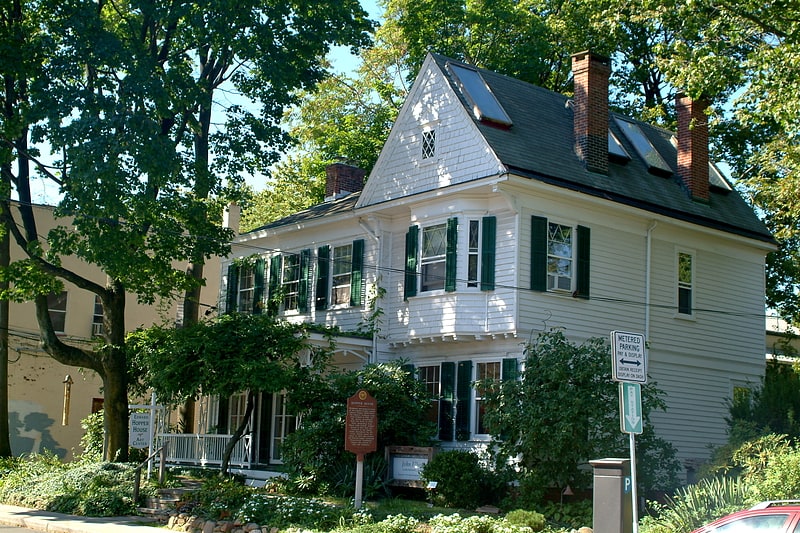
Edward Hopper Birthplace and Boyhood Home, also known as the Edward Hopper House Art Center, is an art center and historic home located at 82 North Broadway, 3 1/2 blocks north of Main Street, Nyack in Rockland County, New York. It is a 2-story, side hall, mid-19th-century Greek Revival–style dwelling with a 2+1⁄2-story, Queen Anne–style addition. It was the home of noted artist Edward Hopper from the time of his birth until he moved to Manhattan in 1910. He held title to the house until his death.
It was listed on the National Register of Historic Places in 2000.[1]
Address: 82 N Broadway, 10960-2628 Nyack
St. Paul's United Methodist Church
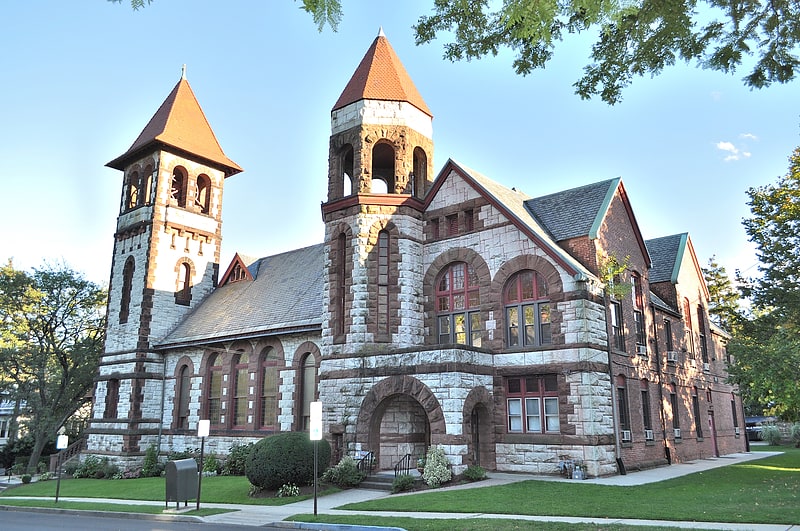
Church in South Nyack, New York. St. Paul's United Methodist Church is a historic United Methodist church in Nyack, Rockland County, New York. It is a Romanesque church built in two sections over a 17-year period starting in 1894. It is constructed of rusticated limestone with brownstone trim.
It was listed on the National Register of Historic Places in 2001.[2]
Nyack Beach State Park
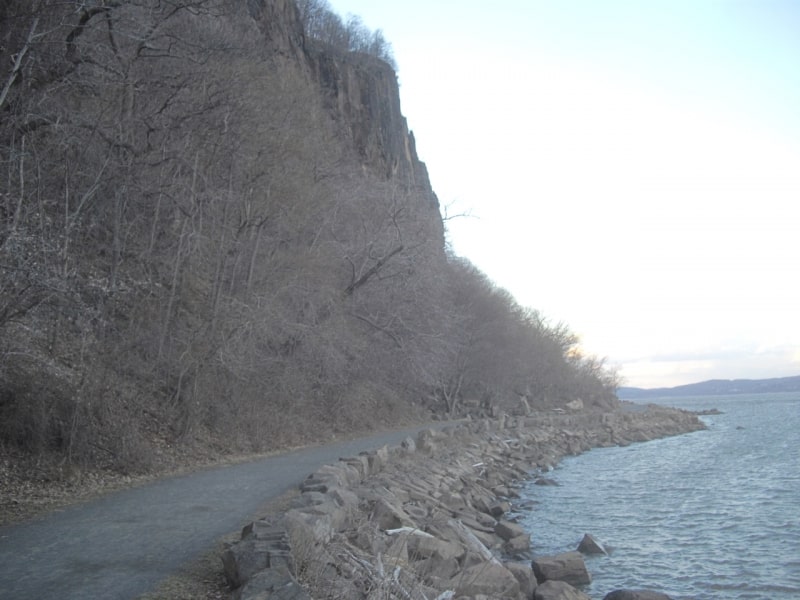
State park in Upper Nyack, New York. Nyack Beach State Park is a 61-acre state park in Upper Nyack, Rockland County, New York. It consists of a small parking lot and a riverfront pathway, the southernmost section of the Hudson River Valley Greenway. It is known for its physical proximity to the Hudson River on one side of the pathway and the looming cliffs of the Palisades rising 700 feet above on the other side.
The park is included within the Palisades Interstate Park system and is functionally part of a continuous complex of parks that also includes Rockland Lake State Park, Hook Mountain State Park, and Haverstraw Beach State Park.[3]
United States Post Office
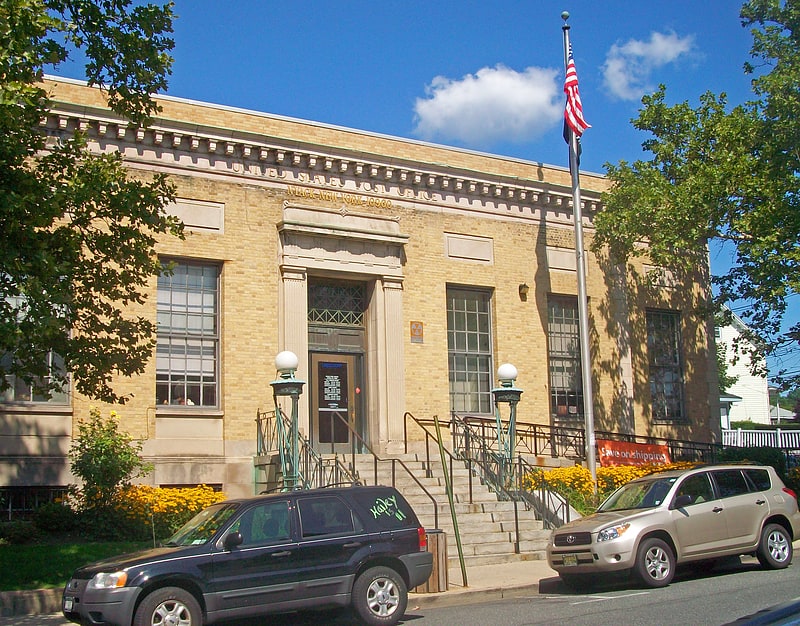
Post office in Nyack, New York. The U.S. Post Office in Nyack, New York, is located on South Broadway in the center of the village. It serves the 10960 ZIP Code, which covers South Nyack and Upper Nyack in addition to the village.
It was built in 1932 in the Classical Revival architectural style, a mode rarely used for American post offices between the wars. In the front lobby are several murals depicting scenes from local history. In 1988 it was listed on the National Register of Historic Places, and in 2004 it was renamed to honor three victims of the 1981 Brinks robbery.[4]
Carson McCullers House
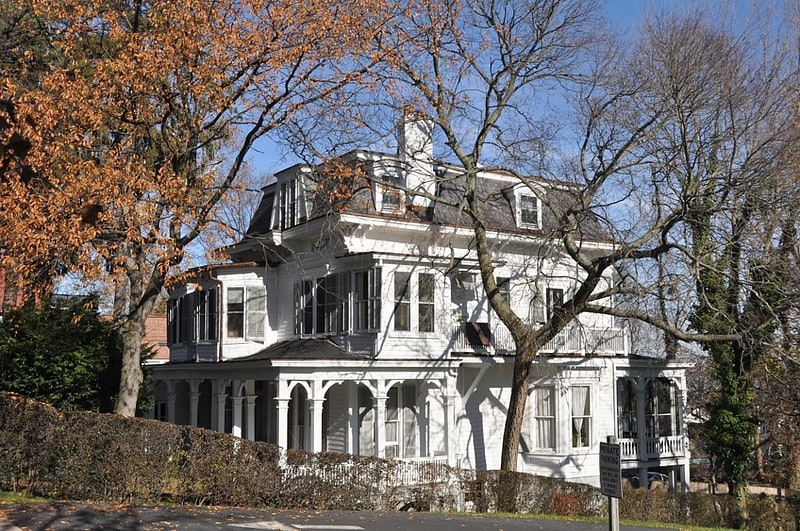
Carson McCullers House is a historic home located at South Nyack in Rockland County, New York. It is a two-story Second Empire–style residence constructed in 1880 and modified with subsequent interior and exterior modifications largely in the Colonial Revival spirit about 1910. It is a frame structure built originally as parsonage, three bays wide and four bays deep. It features a one-story verandah, a slate-covered mansard roof, and an interesting multi-story tower projection crowned by a bell-cast roof. It was home to noted author Carson McCullers from 1945 to 1967.
It was listed on the National Register of Historic Places in 2006.[5]
Ross-Hand Mansion
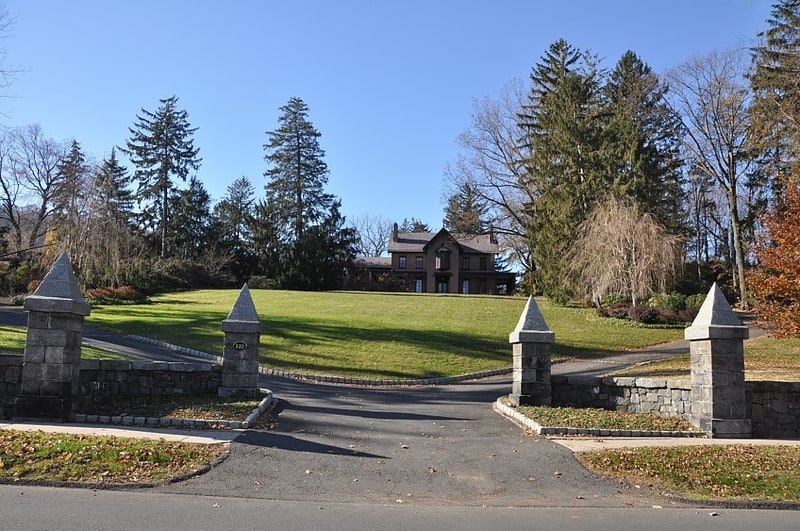
Historical place in South Nyack, New York. Ross-Hand Mansion is a historic home located at South Nyack in Rockland County, New York. The land was acquired from the Tallman family in 1856 by Azariah Ross. Ross was a veteran of the War of 1812 and a successful New York City property developer. He was a longtime resident of Rockland County, having moved there in about 1820. The design of the Mansion is closely based on a design for 'A Country House in the Pointed Style' from the Architecture of Country Houses: including designs for cottages, farm-houses, and villas, with remarks on interiors, furniture, and the best modes of warming and ventilating by the great landscape designer and architect Andrew Jackson Downing. The three story brick mansion with Gothic Revival style features was completed in 1859. It features ornamental bargeboards and a steeply pitched gable roof.
In the 1870s to try to stave off financial uncertainty, Ross converted his house into a hotel, the Ross Mansion. (In the application packet to have the house considered for inclusion on the National Register of Historic Places, one source incorrectly attributes another name to the house during its years as a hotel.) 1883, after Ross' death, the home was purchased at public auction by Mary Elizabeth Haddock Hand. Mary's husband, William Henry Hand, specialized in decorative woodwork and, with their sons William, Roger and Walter, he completed extensive renovations on the property and installed elements, including a marble fireplace, from the Alexander Turney Stewart Mansion on Fifth Avenue in Manhattan that had lately been demolished. They converted the rear part of the property into a working farm. Hand's grandson, also named William Henry Hand, was an assistant to an elderly Thomas Edison. However, strong ethical differences over Edison's business practices led Hand to set out on his own and by 1830 he had established the Hand Laboratory for Electro-Chemical Research and Development in a barn on the grounds of his family's South Nyack mansion. It was there where, over the next thirty years, Hand and his small team developed a long-life battery that was used by emergency services, the military, public works vehicles, school buses and in boats.
William Henry Hand lived at the house with his brother Raymond, sister Dorothy and her daughter Adelma. When William died in 1978, Dorothy and Adelma and Adelma's children were the remaining occupants. In the early 1990s when Adelma wanted to list the property for sale, the analysis of soil samples found dangerous levels of lead contamination: over three decades of battery development, it appears that battery acid, lead and other experimental material was dumped on the grounds of the mansion. The property was deemed a risk to human health and placed as a Class 2 site on the New York State Department of Environmental Conservation Division of Hazardous Waste Remediation register of Inactive Hazardous Waste Sites, #344040. Adelma undertook a private remediation on her property. The NYS DEC performed additional soil testing of neighbouring properties and implemented their full remediation with state funds. The area was finally considered safe and removed from the NYS DEC register in 1998.
The property was sold in 1998, then again in 2014 and, most recently, in 2019.
Also on the property is a 19th-century barn and stable with a gymnasium (in the former battery laboratory) and a small brick smokehouse.
The Ross-Hand Mansion was listed on the National Register of Historic Places in 1983.[6]
Van Houten's Landing Historic District

Historical place in Upper Nyack, New York. Van Houten's Landing Historic District is a national historic district located at Upper Nyack in Rockland County, New York. It encompasses 50 contributing buildings and two contributing structures in the historic core of Upper Nyack. The district developed after 1798 and includes notable examples of Greek Revival and Italianate style architecture. Located in the district is the separately listed Upper Nyack Firehouse. Other notable buildings include the Village Hall, John Lydecker House, C.A. Fellows House, James P. Vorhis House, Gilchrest House, and Voorhis Store.
It was listed on the National Register of Historic Places in 2004.[7]